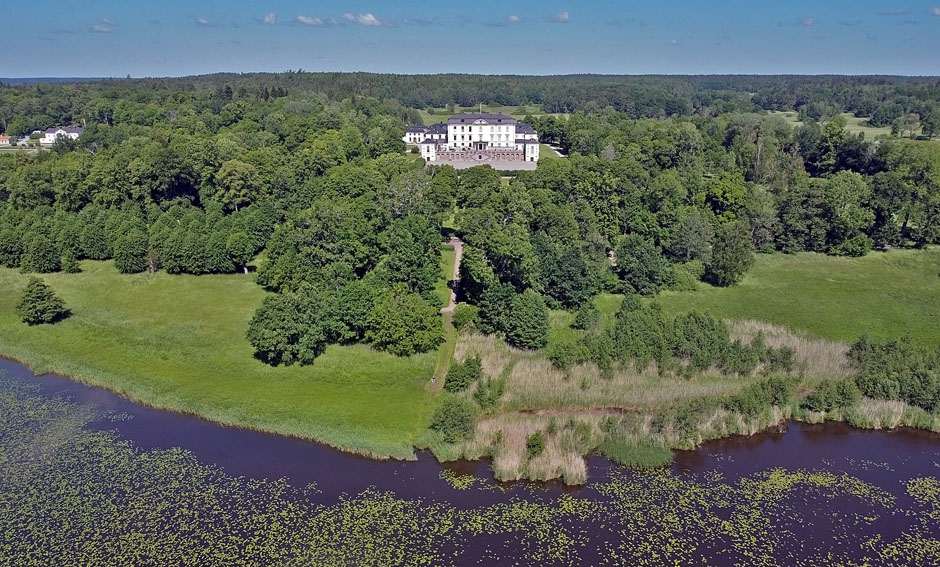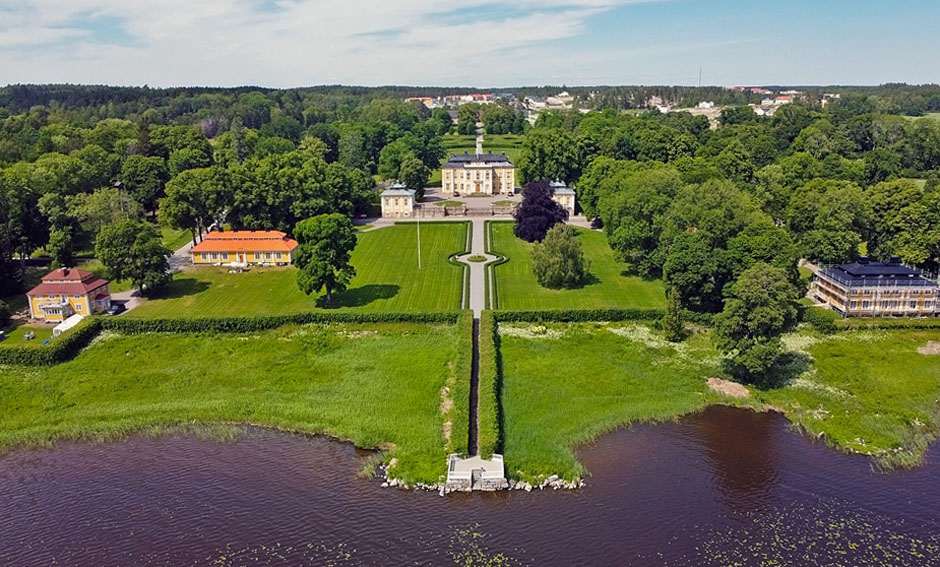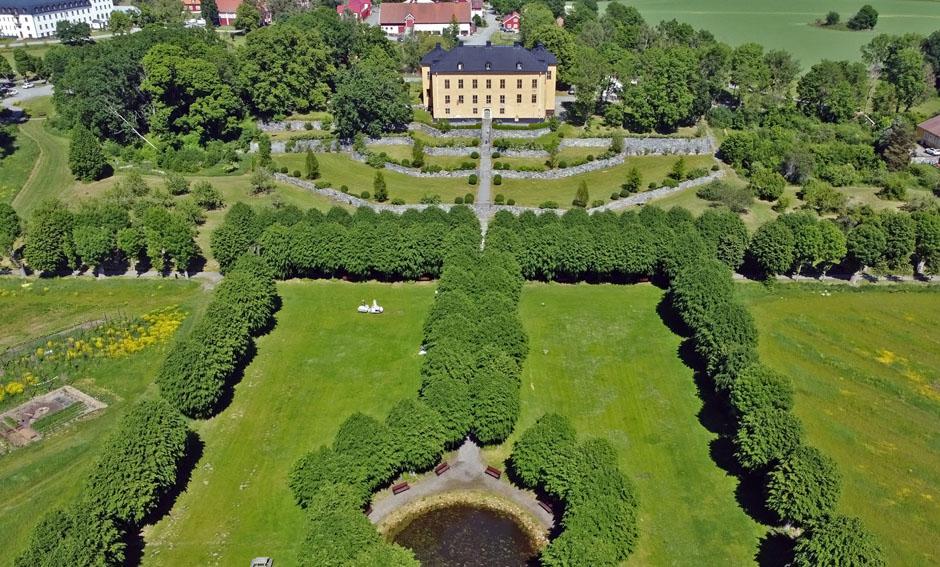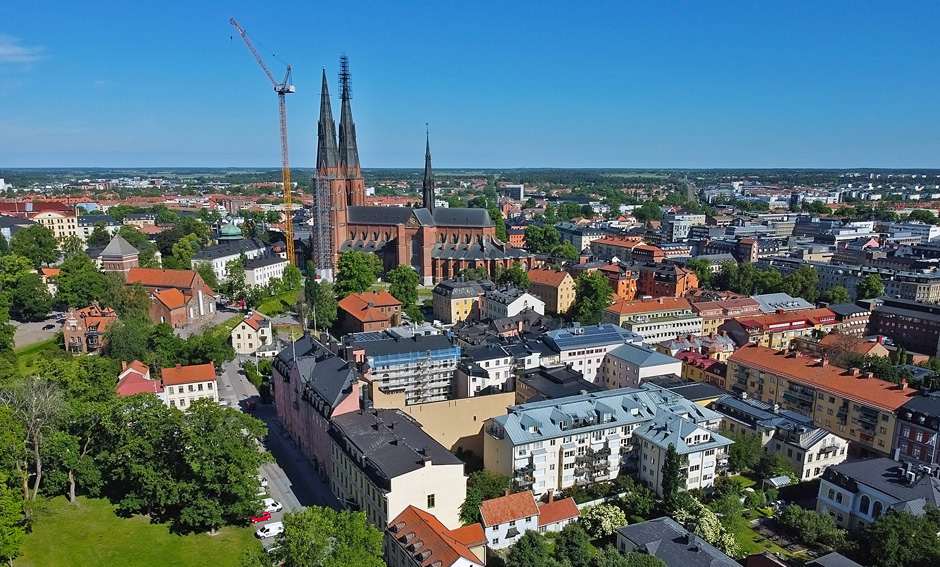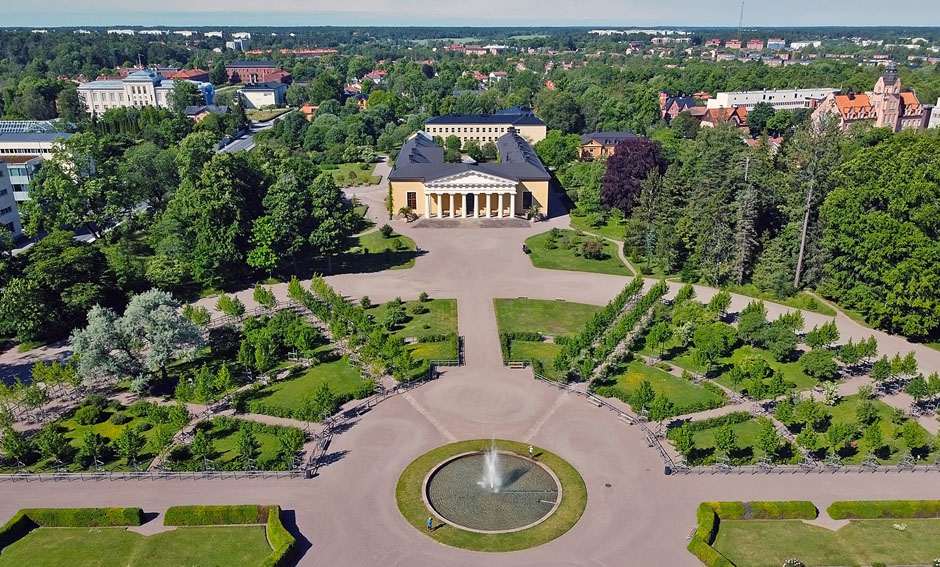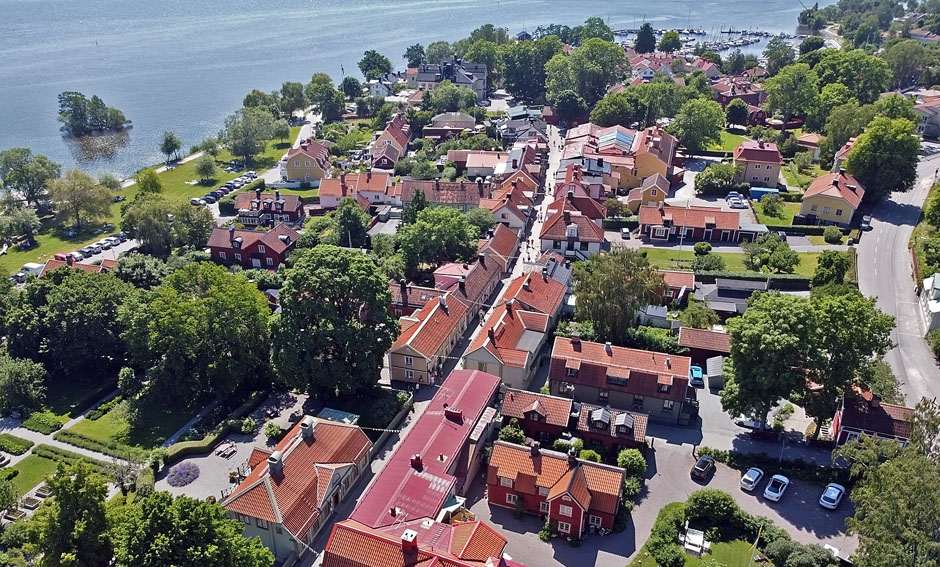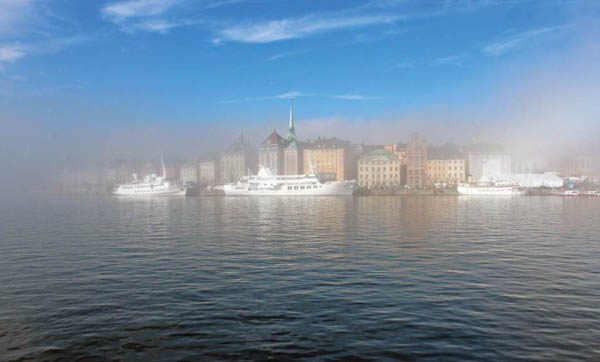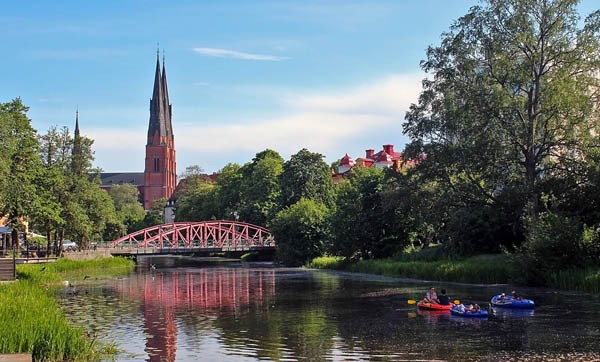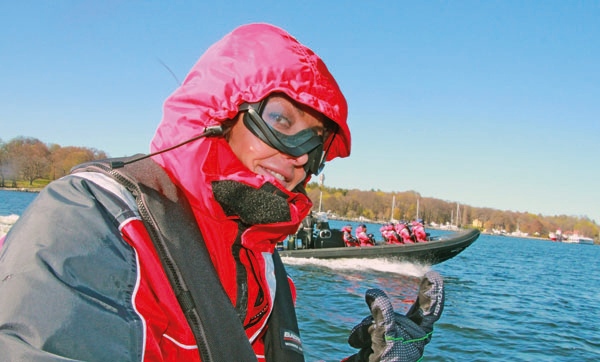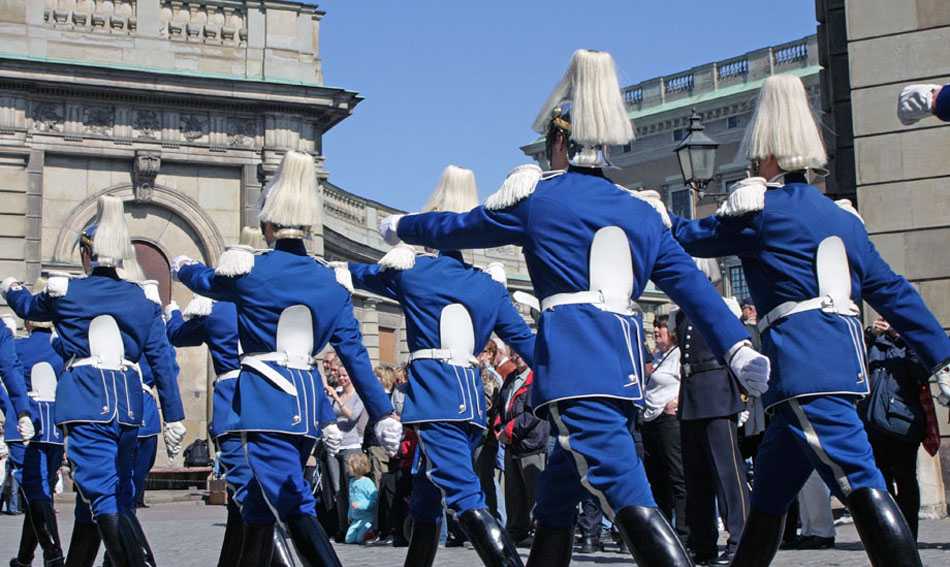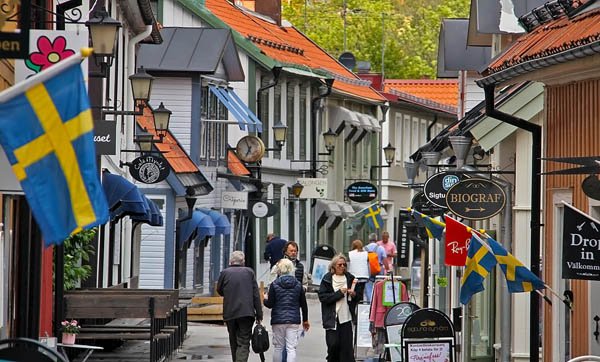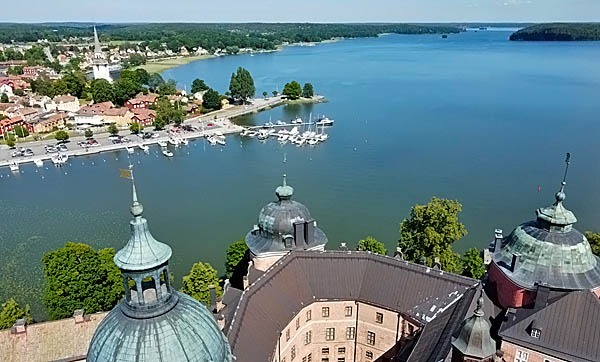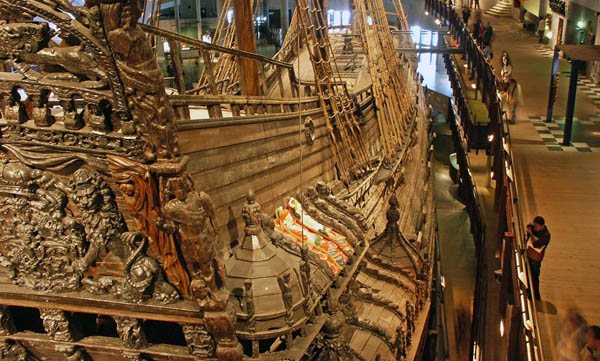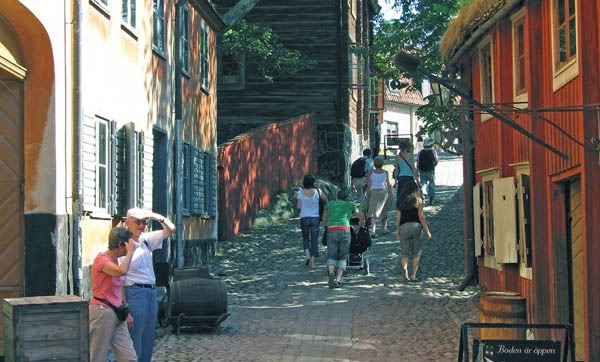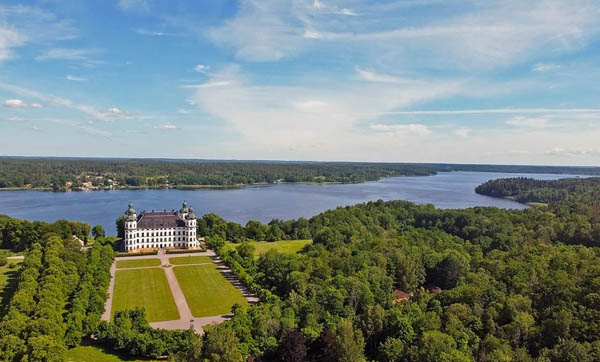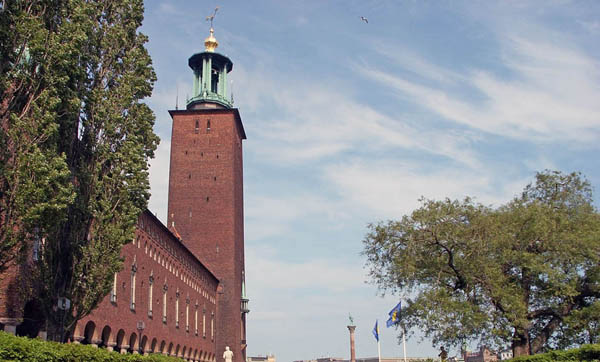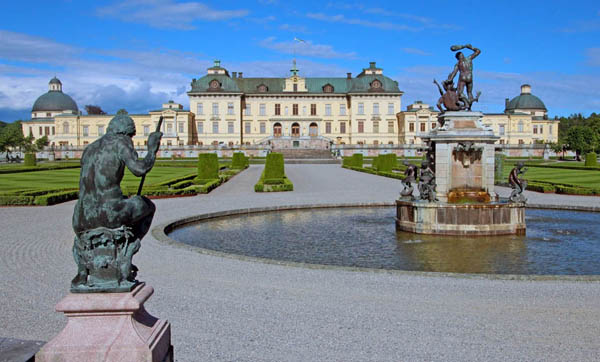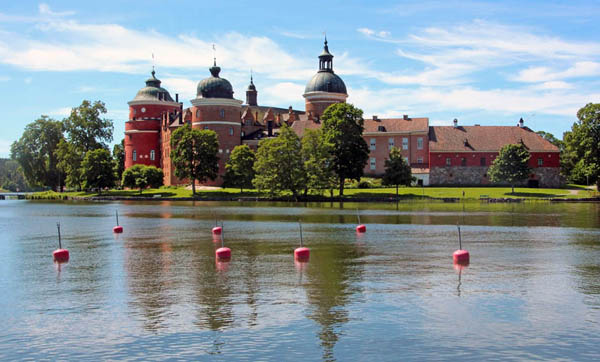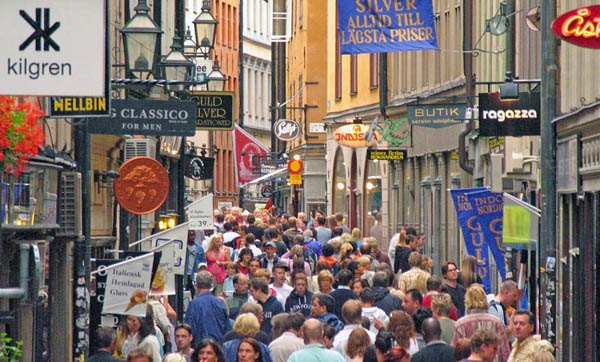Loading ...
200 km.
7-8 h.
1-7 pers.
fr. 630€ per group
Ancient capitals of Sweden
Eventful full day excursions from Stockholm.
Introduction to traditions, history, cuisine, nature and fauna of Sweden.
Excursions are presented in the full versions, but you can change the route up to you by choosing the most interesting sights.
Uppsala
is the fourth largest city in Sweden. Despite this, Uppsala is a provincial and cozy town.
Uppsala Cathedral, located at a picturesque place near the Firis River, is the largest and highest cathedral in all of Scandinavia. It was built in the French Gothic style, construction work began around 1270, and consecration took place in 1435.
Several Swedish kings has been crowned here.
Uppsala Castle domineers the town buildings. It was built in 1549 by King Gustav Vasa, the father of modern Sweden, and has played an important role in the country's history. Here the abdication of Queen Christina took place in 1654. It now houses the Uppsala Art Museum and the residence of the Uppland County Governor.
The Gustavianum Museum is a "huge cabinet of rarities". Egyptian cat mummies, relics from a Viking burial, a magnificent collection of coins and historical medical instruments. One of the highlights of the exhibition is the exquisite Augsburg Art Cupboard from Germany: a 17th century masterpiece of craftsmanship. Under the dome is the magnificent anatomical theater of Rudbek.
Karl von Linnaeus was an 18th century Swedish scientific superstar, the father of modern botany. No city has preserved his legacy better than Uppsala, where he taught at the university. Here is his house, now it is the Linnaeus Museum and his summer farm Hammarby.
Old Uppsala
is one of the most intriguing and atmospheric Viking sites in Scandinavia. Located in a peaceful countryside, it is a fusion of the Royal Mounds, ancient burial sites and a modern museum displaying artifacts found here by archaeologists.
Sigtuna
The oldest city of the kingdom can be found in the annals as far back as the reign of Eric the Victorious at the end of the 10th century. At that time it was the richest and most powerful city in central Sweden. It was in Sigtuna that the first Swedish minted coins with the profile of King Olof engraved on them appeared. But in the 13th century, rulers and merchants moved to Stockholm, and Sigtuna was lost in a timeless oblivion, turning now into a quiet provincial town on the shores of the lake. The charming town on the shores of Lake Mälaren is ideal place for walking. Sigtuna is famous for picturesque wooden houses, 18th century town hall and preserved picturesque ruins of three medieval churches. There are over 150 runestones in and near the town, more than in any other town in the world. Here the most famous lyceum in Sweden is located, which both the famous politician Olof Palme and the current monarch of Sweden Karl Gustav graduated from.
There are four palaces in the vicinity of Sigtuna: the royal Roustersberg, Wenngarn, Steninge and Skukloster.
Steninge Palace
The palace was built by the architect of the Royal Palace in Stockholm, Nicodemus Tessin, in 1705. The history of the building is closely connected with such historical figures as Kings Charles XII and Gustav III. A baroque park descends to Lake Melaren.
Venngarn Palace
The baroque castle was created by Magnus de la Gardi in the 17th century. A unique baroque chapel has remained since then.
The palace was built by the architect of the Royal Palace in Stockholm, Nicodemus Tessin, in 1705. The history of the building is closely connected with such historical figures as Kings Charles XII and Gustav III. A baroque park descends to Lake Melaren.
Venngarn Palace
The baroque castle was created by Magnus de la Gardi in the 17th century. A unique baroque chapel has remained since then.
Roussersberg Palace
Roussersberg Palace was built in 1634-1638 in the style of the Dutch-German Renaissance. In 1757 the castle was placed at the disposal of the young Prince Charles (later - King Charles XIII). Roussersberg became the royal residence. After 1818, Roussersberg became the summer residence of the first kings from the Bernadotte dynasty - Charles XIV Johan and his wife Desiree
Skokloster Castle
The castle was built in the Baroque style between 1654 and 1676 by a wealthy military leader, Count Karl-Gustav Wrangel.
The castle is a monument to the era of the Swedish Great Power, a period in the middle of the 17th century when Sweden's territories expanded, which made it one of the largest powers in Europe. After the death of Wrangel in 1676 the castle was not finally built. Thus, the large banquet hall remained basically in the same condition as the builders left it in the summer of 1676. The castle is the only building in Europe with a preserved original construction site of the 17th century.
The finished parts of the castle, displaying the sumptuous splendor of the Baroque style, are home to collections of paintings, furniture, textiles, silver and glassware. One of the most famous paintings displayed in the castle is Giuseppe Arcimboldo's Portrait of Emperor Rudolph II as Vertumno, depicting Holy Roman Emperor Rudolph II as the Roman god of the seasons with fruits and vegetables.
The Armory and Castle Library are based on Wrangel's armory and book collections. They were substantially added by the wills of other aristocrats of the 17th and 18th centuries.
The Arsenal contains the world's largest collection of 17th century personal weapons. It mostly has muskets and pistols, as well as swords (including Japanese samurai swords), small cannons, pikes, and crossbows. The weapons collection also includes various exotic items such as a 16th century Eskimo canoe and snake skins. Most of the collection is made up of war trophies stolen from Poland during the Swedish Flood in the 17th century.
Tour options (duration in hours)
• Sigtuna, Uppsala - 5 hr.
• Sigtuna, Uppsala, old Uppsala - 5-6 hr.
• Sigtuna, Skokloster castle - 4-5 hr.
• Sigtuna, Skokloster Castle, Uppsala - 5-6 hr.
• Sigtuna, Venngarn palace, Rosersberg slott, Skokloster castle, Uppsala, old Uppsala - 7-8 hr.
• Sigtuna, Uppsala - 5 hr.
• Sigtuna, Uppsala, old Uppsala - 5-6 hr.
• Sigtuna, Skokloster castle - 4-5 hr.
• Sigtuna, Skokloster Castle, Uppsala - 5-6 hr.
• Sigtuna, Venngarn palace, Rosersberg slott, Skokloster castle, Uppsala, old Uppsala - 7-8 hr.
Itinerary
Stockholm
→ 50 km. Sigtuna
→ 5 km. Venngarns slott
→ 25 km. Skokloster castle
→ 50 km. Uppsala
→ 5 km. old Uppsala (Gamla Uppsala)
→ 70 km. Stockholm
Stockholm
→ 50 km. Sigtuna
→ 5 km. Venngarns slott
→ 25 km. Skokloster castle
→ 50 km. Uppsala
→ 5 km. old Uppsala (Gamla Uppsala)
→ 70 km. Stockholm
